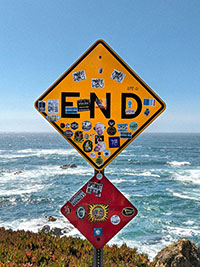
“What would it take” might be my new favourite phrase, finally replacing my old tried and tested “what would need to be true” after all these years.
Credit for this goes to Ndidi Okezie, not just for sharing the phrase, but also for the neat explanation she gave of why it’s an essential question for charities to ask themselves.
But I’ll come to that in a moment. First, a quick definition.
The simplest way I can explain strategic thinking is this: operational thinking starts with where you are now, and projects forwards; strategic thinking starts with where you want to be, and works back from there.
I saw the profound difference this apparent nuance can make, time and again, back when I worked in the business sector, usually within a few minutes of someone declaring their “big hairy goal” being something like “to double sales over the next three years”.
Their answer to the obvious question of “how” would invariably be “more”. More salespeople, more sites, more marketing, more of whatever we do today that seems to work. And fair enough, that’s solid operational thinking.
But operational thinking has its flaws, in this case, the law of diminishing returns.
Your next draft of salespeople may not be as good, your next tranche of customers not as profitable, your next wave of marketing not quite as effective.
Add to that, your operations team might struggle with the demand, your customer service teams will get more stretched, and supply chains likewise; and the need to run much harder just to retain the customers you already have starts to make itself felt.
And of course, the world responds. Competitors don’t just sit back and watch you eat their lunch.
None of these things is inevitable, but most do tend to happen, which is why we consistently see that law of diminishing returns.
So instead of asking “how” and getting the simplistic answer, we learn to ask instead, what would it take?
To win all that market share and to hold onto it when competitors respond? To get people who’ve not bought into your marketing before, to suddenly buy in now? To deliver an improved customer experience despite doubling the volume?
It’s simply a way of reframing the question to shift the starting-point, from the stuff you currently do to the goal you want to achieve, working backwards from there.
The obvious parallel for a charity, is to ask: what would it take to realise your organisation’s vision?
And like most questions, how we answer it turns out to be more important than what the answer is.
Strategic thinking happens when you answer that question from the vision, working backwards – being genuinely curious about what it would take.
Operational thinking starts with what your charity does now, considers how much more it could do, and typically concludes with the classic words: “so, the vision is more of an aspiration really, not something we can actually achieve…”
But occasionally, just occasionally, someone will offer a chink of light by adding one word to the end of that sentence: “…alone”.
That single word can change a conversation. In fact, it can change an entire strategy. Who knows, it might even change the world.
Because no charity is alone. None of us operates in a vacuum.
And that’s the value of strategic thinking, because it doesn’t start with a whole load of history and assumptions and constraints. It doesn’t even start with your organisation.
It simply starts with a vision and asks what would need to be true.
That simple shift in perspective allows the whole scope of the conversation to expand, to consider all kinds of partnerships and innovations that might come into play in the service of your vision.
And it will lead you to develop a different kind of strategy. One that puts all the people you care about at the centre (not just those you currently serve) and invariably ends up with collaboration and very often system change, right at its heart.
Alternatively, you can just do the same-old operational thinking and end up with a strategic plan that, in reality, is 99% about your organisation doing more of what it does, because deep down you’re resigned to the belief that the world will never change.
As the old adage goes, whether you believe you can or believe you can’t, you’re probably right.
So, here’s the exam question: what would it take to develop this level of strategic thinking inside your organisation?
